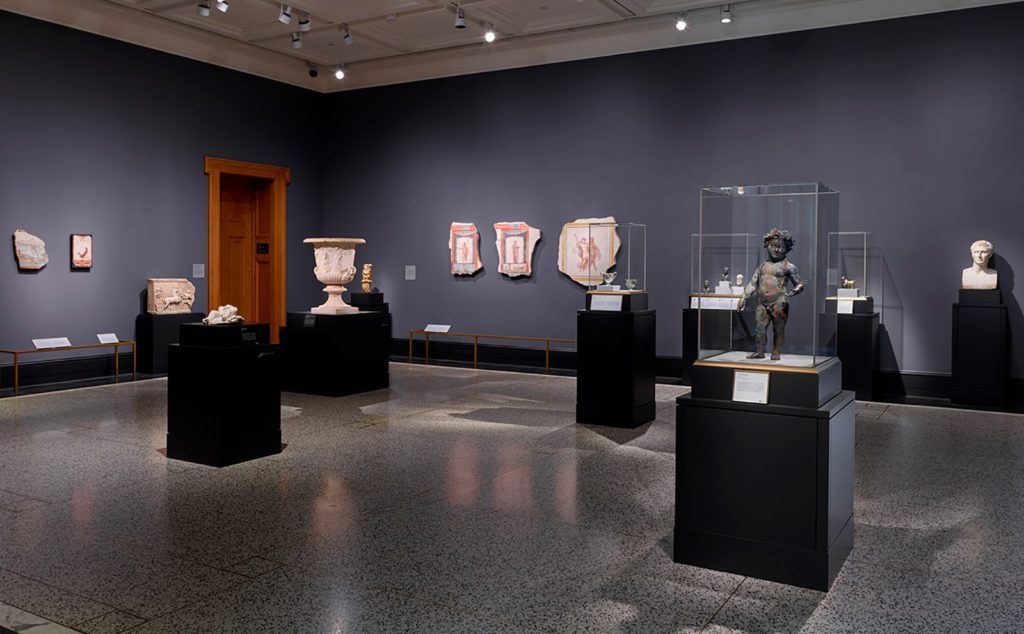Typographers of yore didn’t come up with the concept of dummy copy because people thought that content is inconsequential window dressing, only there to be used by designers who can’t be bothered to read. Lorem Ipsum is needed because words matter, a lot. Just fill up a page with draft copy about the client’s business and they will actually read it and comment on it. They will be drawn to it, fiercely. Do it the wrong way and draft copy can derail .
Asking the client to pay no attention Lorem Ipsum isn’t hard as it doesn’t make sense in the first place, that will limit any initial interest soon enough. Try telling a client to ignore draft copy however, and you’re up to something you can’t win. Whenever draft copy comes up in a meeting confused questions about it ensue. Lorem Ipsum is a tool that can be useful, used intentionally it may help solve some problems. At worst the discussion is at least working towards the final goal of your site where questions about lorem ipsum don’t.
Most of our treatments will focus on stabilising the objects to minimise potential damage during transportation, working closely with Technical Services decant team to achieve this end. Many treatments are non- interventive and involve specialist packing, additional handling boards, boxes, crates and packing with protective museum-grade foam and tissue.
Fred Wilson
This is quite a problem to solve, but just doing without greeking text won’t fix it. Using test items of real content and data in designs will help, but there’s no guarantee that every oddity will be found and corrected. Do you want to be sure? Then a prototype or beta site with real content published from the real CMS is needed—but you’re not going that far until you go through an initial design cycle.
Websites in professional use templating systems. Commercial publishing platforms and content management systems ensure that you can show different text, different data using the same template. When it’s about controlling hundreds of articles, product pages for web shops, or user profiles in social networks, all of them potentially with different sizes, formats, rules for differing elements things can break, designs agreed upon can have unintended consequences and look much different than expected.
Consider this: You made all the required mock ups for commissioned layout, got all the approvals, built a tested code base or had them built, you decided on a content management system, got a license for it or adapted open source software for your client’s needs. Then the question arises: where’s the content? Not there yet? That’s not so bad, there’s dummy copy to the rescue. But worse, what if the fish doesn’t fit in the can, the foot’s to big for the boot? Or to small? To short sentences, to many headings, images too large for the proposed design, or too small, or they fit in but it looks iffy for reasons the folks in the meeting can’t quite tell right now, but they’re unhappy, somehow. A client that’s unhappy for a reason is a problem, a client that’s unhappy though.
Using dummy content or fake information in the Web design process can result in products with unrealistic assumptions and potentially serious design flaws. A seemingly elegant design can quickly begin to bloat with unexpected content or break under the weight of actual activity. Fake data can ensure a nice looking layout but it doesn’t reflect what a living, breathing application must endure. Real data does.
If that’s what you think how bout the other way around? How can you evaluate content without design? No typography, no colors, no layout, no styles, all those things that convey the important signals that go beyond the mere textual, hierarchies of information, weight, emphasis, oblique stresses, priorities, all those subtle cues that also have visual and emotional appeal to the reader. Rigid proponents of content strategy may shun the use of dummy copy but then designers might want to ask them to provide style sheets with the copy decks they supply that are in tune with the design direction they require.

















